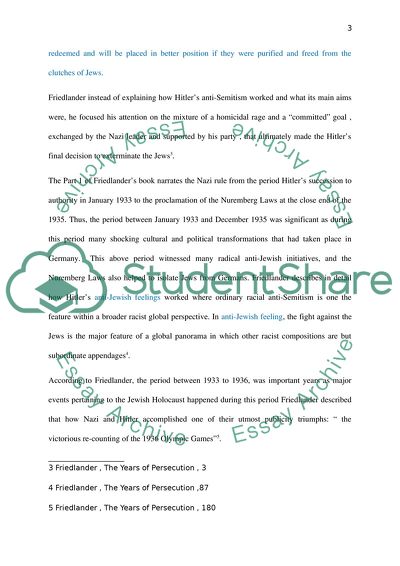Cite this document
(Saul Friedlander's The Years of Persecution Book Report/Review Example | Topics and Well Written Essays - 3500 words, n.d.)
Saul Friedlander's The Years of Persecution Book Report/Review Example | Topics and Well Written Essays - 3500 words. https://studentshare.org/history/1876275-the-holocaust
Saul Friedlander's The Years of Persecution Book Report/Review Example | Topics and Well Written Essays - 3500 words. https://studentshare.org/history/1876275-the-holocaust
(Saul Friedlander'S The Years of Persecution Book Report/Review Example | Topics and Well Written Essays - 3500 Words)
Saul Friedlander'S The Years of Persecution Book Report/Review Example | Topics and Well Written Essays - 3500 Words. https://studentshare.org/history/1876275-the-holocaust.
Saul Friedlander'S The Years of Persecution Book Report/Review Example | Topics and Well Written Essays - 3500 Words. https://studentshare.org/history/1876275-the-holocaust.
“Saul Friedlander'S The Years of Persecution Book Report/Review Example | Topics and Well Written Essays - 3500 Words”. https://studentshare.org/history/1876275-the-holocaust.


